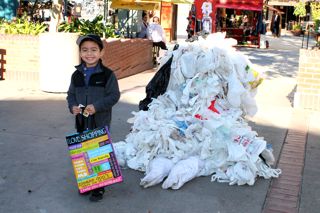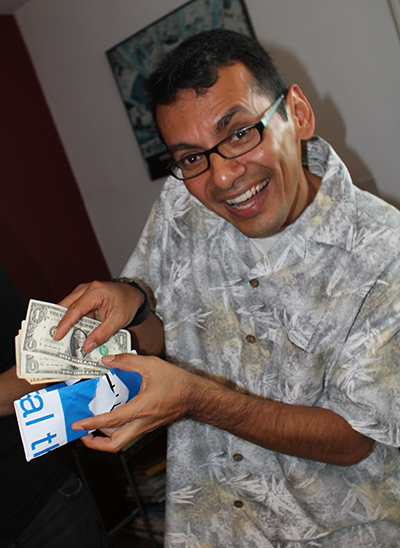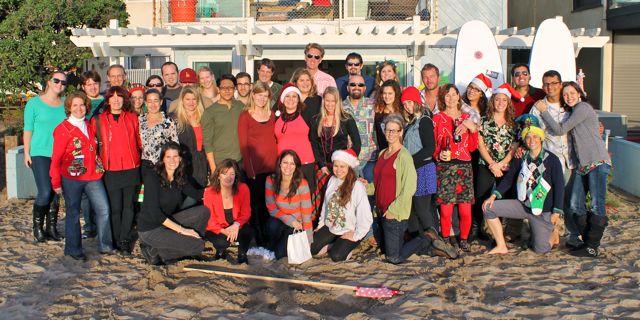At Heal the Bay, we are so grateful to the ocean that every December, we promote sacking plastic bags and going reusable for the holidays…and all year round. Plastic bags clog our waterways, poisoning marine animals and posing health risks for humans.
T his year, we’d like to thank Green Santa for distributing reusable bags at Olvera Street in historic Los Angeles at our sixth annual A Day Without a Bag. Some of the bags contained “golden tickets” good for $25 Vons/Pavilions gift cards. In addition, at their Hollywood stores, Vons/Pavilions rewarded customers using reusable bags with $25 gift cards. Thank you, Vons/Pavilions!
his year, we’d like to thank Green Santa for distributing reusable bags at Olvera Street in historic Los Angeles at our sixth annual A Day Without a Bag. Some of the bags contained “golden tickets” good for $25 Vons/Pavilions gift cards. In addition, at their Hollywood stores, Vons/Pavilions rewarded customers using reusable bags with $25 gift cards. Thank you, Vons/Pavilions!
Thank you to our additional partners: Albertsons, Ralphs and Earthwise. We’d also like to thank our reusable bag “eco-elves,” who distributed bags throughout Los Angeles from the following local high schools:
- Compton High School
- APEX Academy @ Bernstein High School
- Westchester Enriched Science Magnet
- Sun Valley High School
- King Drew Magnet High School
Coalition for a Green Glendale also handed out reusable bags at Glendale retailers.
The ocean is also important to the folks at Alchemie Spa, who hosted a “Beauty for the Bay” event this week, donating proceeds to Heal the Bay.
We are also grateful to have new neighbors, the independent pizzeria Fresh Bros. Not only is their food yummy, but they also donated a portion of their proceeds from last week to Heal the Bay.
And thank YOU for a wonderful 2012. Without you, we can’t push forward with our mission to keep the Santa Monica Bay healthy and safe. Whether you donate your time or your treasure (or both!) we appreciate all you do. Happy New Year!
Seeking a fun way to celebrate New Year’s Eve? Bring in the New Year 2013 in Santa Monica at the Basement Tavern at the Victorian! Great food, drinks and entertainment on all three floors: Ground Zero in the Basement, the Mixx in the Attic, and DJ Benjamin Walker on the Main Floor. Tickets are $45. Proceeds will benefit Heal the Bay and the National Heritage Museum.





